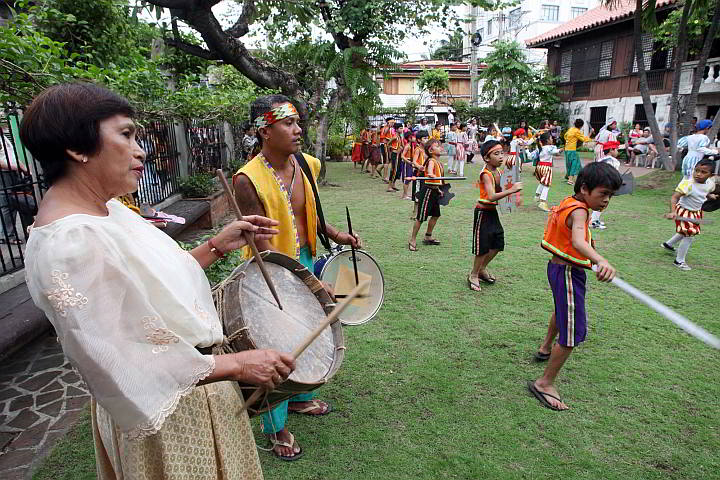
Carolina Diola (left) and her son Rommel continue the tradition of the Cebuano Sinug, after the death last year of Sinug heritage keeper Estelita “Nang Titang” Diola. The original prayer dance will be performed today in front of the Ramon Aboitiz Foundation Inc. in Parian, Cebu City. (CDN PHOTO/JUNJIE MENDOZA)
The Casa Gorordo Museum has been closed since September for renovations, but the annual “Sinug sa Casa Gorordo” will continue at 2 p.m today in keeping with the annual tradition.
Today’s holding of the annual dance, however, will be different because of the death in March last year of 88-year-old Estelita ‘Nang Titang’ Diola, known as the Sinug “beat keeper.”
The Casa Gorordo Museum is a historic house that showcases 19th century Cebuano-Filipino lifestyle. It is being upgraded to make the facility at par with world-class standards.
The holding of the house’s traditions including the Sinug is continued as part of the Ramon Aboitiz Foundation Inc.’s pledge to conserve local heritage.
The original sinulog dance steps can be wtinessed at 2 p.m. today in front of the Eduardo Aboitiz Development Studies Center building along Lopez Jaena Street in Parian, Cebu City.
Sinug is a traditional dance-prayer offered to the Sto. Niño de Cebu with a beat and choreography different from the popular Sinulog street dance.
In many ways, the more popular Sinulog that can be seen during the grand parade is different from that of Nang Titang.
Children from Mabolo, Cebu City are taught the traditional ‘Sinug’ as showcased this afternoon in the annual “Sinug sa Casa Gorordo” Museum in Parian.
(FILE PHOTO)
Although both dances pay homage to the Señor Sto. Niño, Nang Titang’s less-known Sinug dance has its own fixed format and unique beat and steps not present in the Sinulog.
The Sinug does not have a dancing “reyna” or queen who carries the image of the Holy Child. Instead the icon is placed at an altar facing the dancers. The dance narrates the coming of Christianity to the Philippines, the conflict between the locals and the Spaniards and eventual peace between the two forces through the intercession of the Sto. Niño.
The Sinug dancers were traditionally invited by the Gorordo family and other Parian families who wished to pray for the souls of their departed loved ones in this special way, on the Monday after the fiesta of the Señor.
Believing that the dance ritual is worth preserving for the next generations to witness and experience, RAFI, through its Culture & Heritage Unit, has supported the group’s efforts to ensure that the Sinug tradition lives on.
Today’s Sinug dance ritual will be performed by the Turang Dance Troupe from Mabolo, Cebu City. The dancers though will be led by Carolina Diola and her son, Rommel Borja. On their shoulders lie the responsibility of preserving this unique aspect ofthe Cebuano Sinulog heritage.
Nang Titang learned the dance steps when she was seven years old from her father, Buenaventura ‘Turang’ Diola, and was taught the beat by Mariano ‘Iklot’ Bontilao.
She in turn passed on her knowledge of the Sinug to her niece Carolina and nephew Rommel, who are now keeping the tradition.
Related Stories:
Sinug sa Casa Gorordo to proceed despite museum’s temporary closure